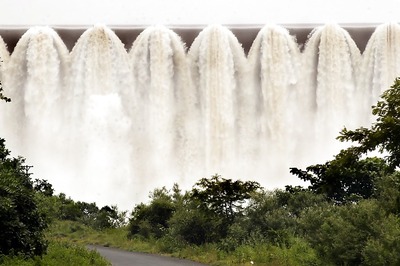
views
Remember the 2006 film Apocalypto and how the protagonist Jaguar Paw is saved from being sacrificed by a Mayan King, thanks to a total solar eclipse? When we think of solar eclipses, we always imagine a bright sunny day suddenly turning dark thanks to a shadow engulfing Earth's star. But did you know that there a multiple types of solar eclipses.
India will witness a special solar eclipse famously known as the Annular Solar Eclipse on June 21, 2020. This time, it is said to be the 'deepest' annular solar eclipse in nearly a hundred years.
A solar eclipse takes place when the moon moves between the sun and earth, obstructing the sun’s light. In an annular solar eclipse, the moon entirely or partially covers the sun from when seen from earth. On Sunday, people from different parts of the world will be able to witness the beauty of what is commonly signified as the 'Ring of Fire'. The Annular Solar Eclipse June 2020 is likely to appear for around 30 seconds similar to a necklace of pearls.
Most of Asia, Africa, South and East Europe, northern Australia, and parts of the Pacific and places located in the southern Arabian Peninsula will be clearly able to observe this astronomical event.
What happens in an annular solar eclipse?
Solar eclipses can be classified as total, when the moon completely covers the sun, or annular. In an annular solar eclipse, the moon covers the sun from the center leaving the outer rim of the sun perceptible. It gives an impression of a ring – popularly called the ‘ring of fire’. The word ‘annular’ comes from a Latin word ‘annulus’ meaning, ‘a ring.’
Total solar eclipse
In case of a total solar eclipse, the moon absolutely covers the entire circle of the sun. It happens when the moon comes between the earth and the sun casting the darkest shadow, known as umbra, on earth, sometimes it gets almost as dark as night. For total solar eclipse, the three celestial bodies must be aligned in a straight line.
Partial solar eclipse
Solar and lunar eclipses, both may occur as partial eclipses. In a partial solar eclipse, the moon passes in front of the sun’s center, leaving behind a crescent-shaped section of the sun visible. It casts just the outer part of its shadow, known as the penumbra, on earth.




















Comments
0 comment